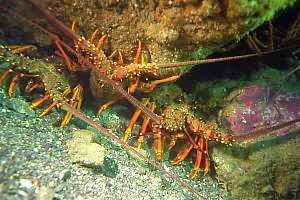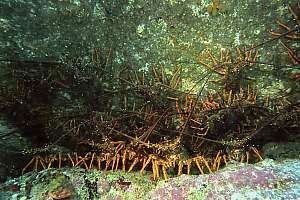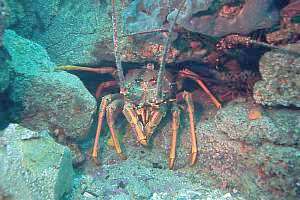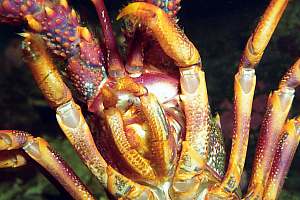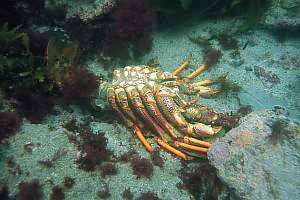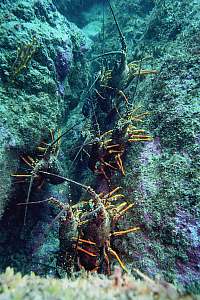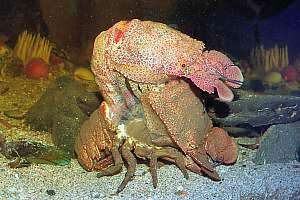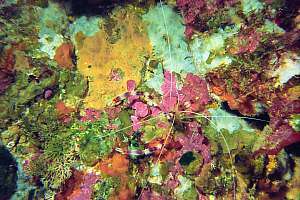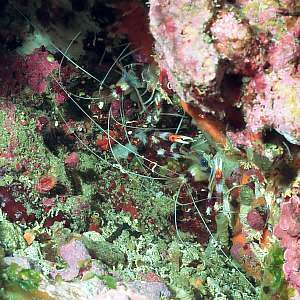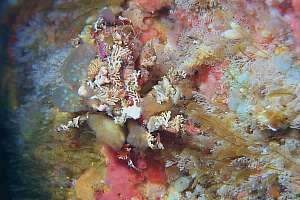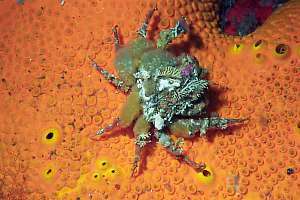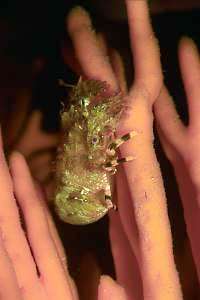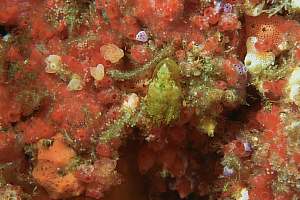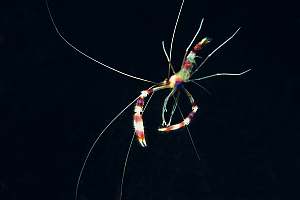 f020222: With its swimmerettes underneath its abdomen, a
coral shrimp swims stately and purposefully through the water. This photo
shows its weird anatomy. The five pairs of legs, counting from the rear,
are: leg, leg, claw, nipper, nipper. This is quite unusual for crustaceans.
f020222: With its swimmerettes underneath its abdomen, a
coral shrimp swims stately and purposefully through the water. This photo
shows its weird anatomy. The five pairs of legs, counting from the rear,
are: leg, leg, claw, nipper, nipper. This is quite unusual for crustaceans. |
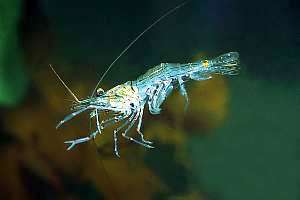 f013929: the common shrimp in New Zealand (Palaemon affinis)
is a keen swimmer, being able to swim both forward and backward with ease.
Its four long antennas give it early warning of impending danger. With
its little nippers it cleans many organisms in exchange for food.
f013929: the common shrimp in New Zealand (Palaemon affinis)
is a keen swimmer, being able to swim both forward and backward with ease.
Its four long antennas give it early warning of impending danger. With
its little nippers it cleans many organisms in exchange for food. |
